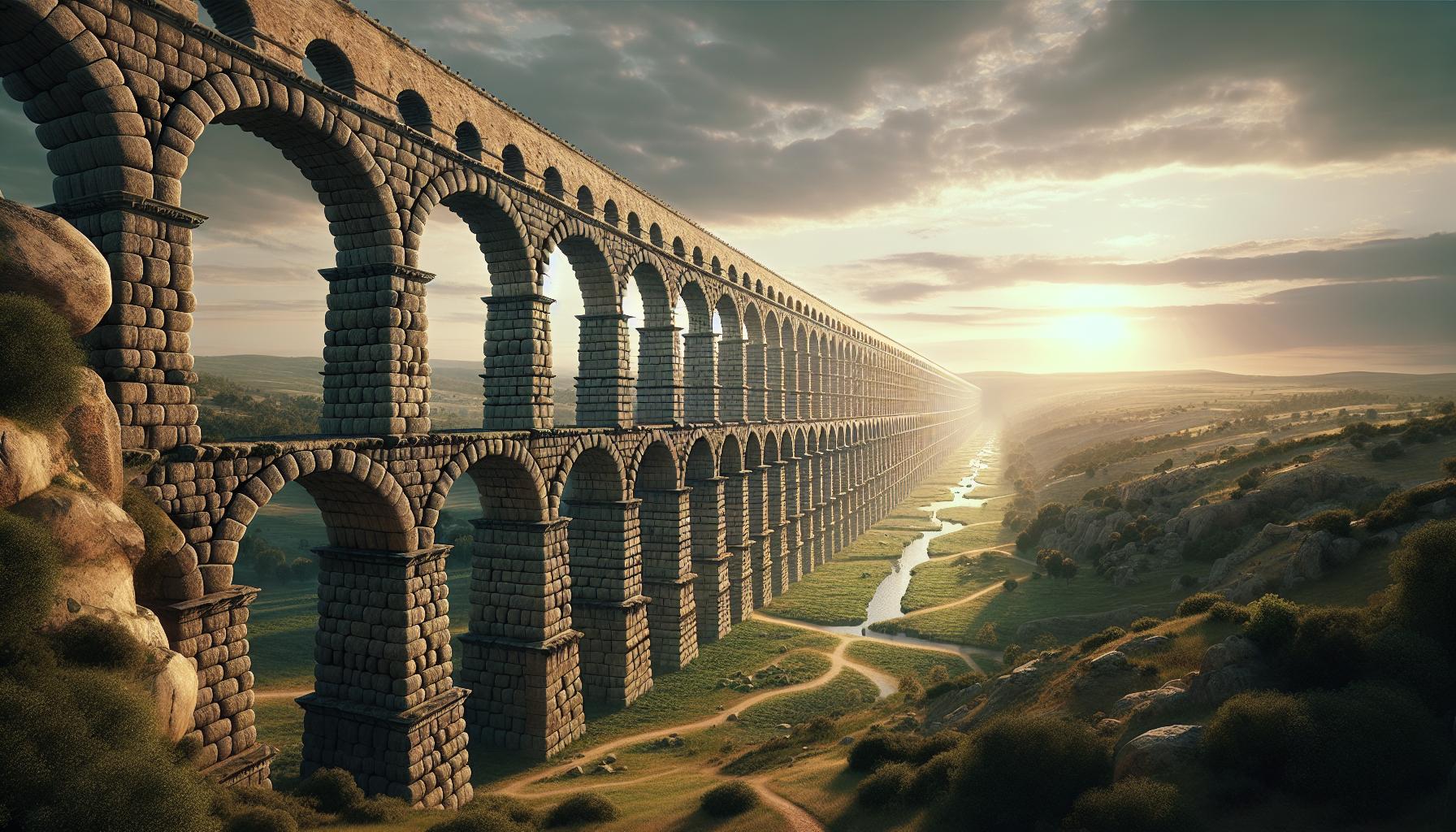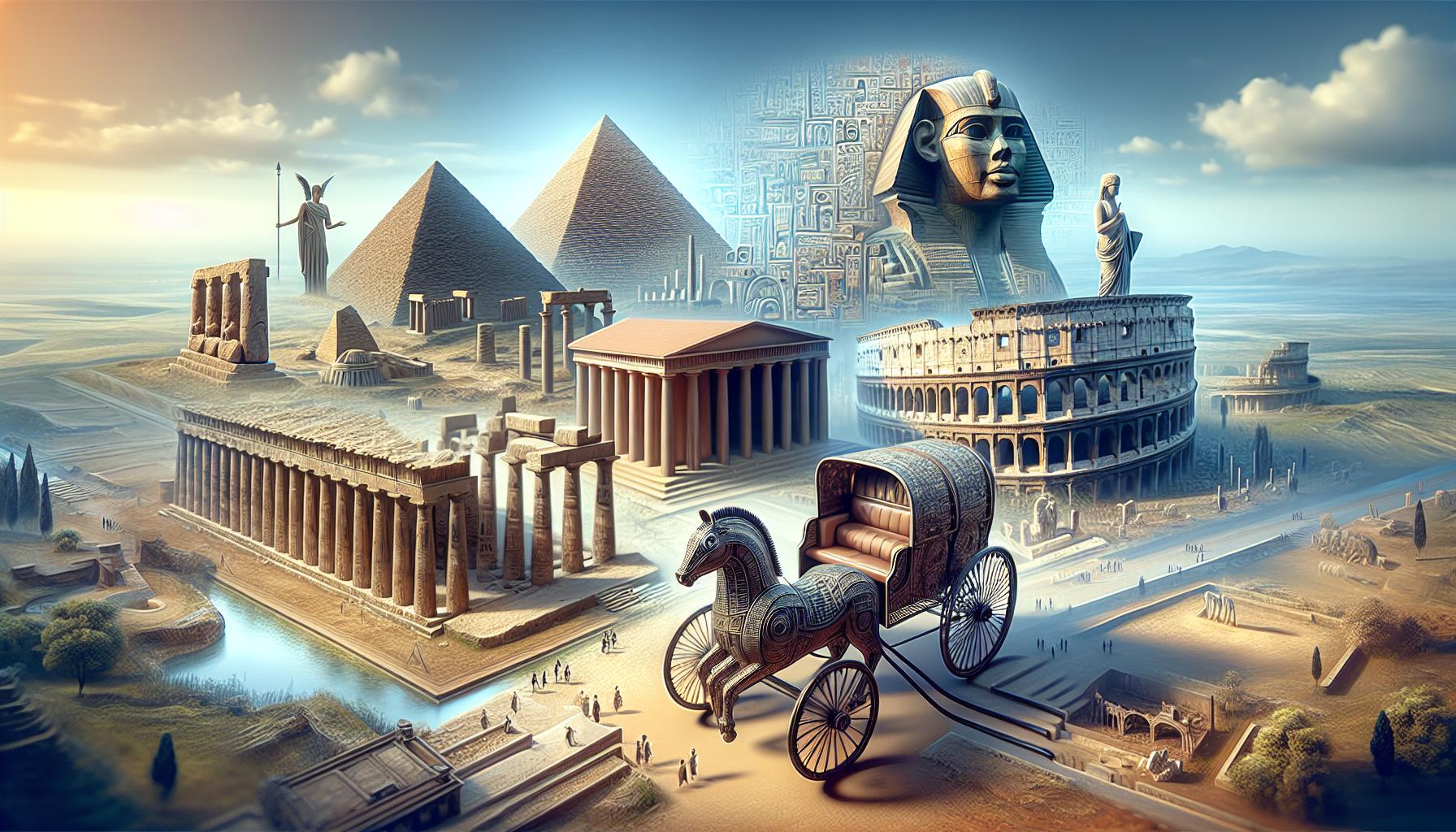Step back in time and marvel at the ingenuity of ancient engineers. From the towering pyramids of Egypt to the intricate aqueducts of Rome, these ancient engineering marvels stand as testaments to human innovation and craftsmanship. Imagine yourself transported to an era where grand structures were built without the aid of modern technology, yet have withstood the test of time.
Discover the secrets behind these architectural wonders and delve into the minds of the visionaries who brought them to life. Explore how ancient civilizations pushed the boundaries of what was thought possible, leaving behind a legacy that continues to awe and inspire to this day. Join us on a journey through history as we uncover the engineering feats that have shaped the world we know today.
Architectural Wonders of Ancient Civilizations
Exploring the architectural wonders of ancient civilizations unveils remarkable feats of engineering and design that have stood the test of time, showcasing the ingenuity and vision of our ancestors. Let’s delve into some of the most fascinating structures that continue to captivate the world.
Ancient Egyptian Pyramids
The ancient Egyptians are renowned for their monumental pyramids, such as the Great Pyramid of Giza, which are not only impressive in size but also exhibit incredible precision in construction. Built as tombs for pharaohs, these towering structures illustrate the advanced engineering skills of the Egyptians. The precise alignment of the pyramids with the cardinal points is a testament to their sophisticated understanding of astronomy and mathematics.
Roman Aqueducts
The Romans are celebrated for their mastery of aqueduct technology, which enabled the transport of water over long distances to support their cities and settlements. Aqueducts like the Pont du Gard in France showcase the Romans’ innovative use of arches and precise engineering to channel water efficiently. These marvels of ancient engineering highlight the importance of efficient water management in sustaining urban centers.
Mesopotamian Ziggurats
Mesopotamian civilizations, such as the Sumerians and Babylonians, constructed impressive stepped temples known as ziggurats. These massive structures with multiple levels served as religious centers and symbols of cultural and architectural advancement. The Ziggurat of Ur is a prominent example, reflecting the Mesopotamians’ architectural prowess and their reverence for deities through monumental construction.
Greek Parthenon
The Parthenon, situated on the Acropolis of Athens, stands as a symbol of classical Greek architecture and artistry. Dedicated to the goddess Athena, this iconic temple exemplifies the Greeks’ architectural principles of harmony, symmetry, and proportion. The intricate design of the Parthenon’s columns and friezes showcases the Greeks’ attention to detail and aesthetics in architectural structure.
Chinese Great Wall
The Great Wall of China, a vast defensive fortification, embodies the engineering ingenuity of ancient Chinese civilizations. Constructed over centuries and spanning thousands of miles, the Great Wall showcases the strategic vision and labor-intensive efforts of the Chinese to protect their territories from invasions. The wall’s advanced architectural design and defensive features reflect the ancient Chinese commitment to security and unity.
Aqueducts and Water Management Systems

Exploring ancient engineering marvels, such as the pyramids of Egypt, Roman aqueducts, and Mesopotamian ziggurats, sheds light on the remarkable advancements in water management systems by ancient civilizations like the Sumerians. The precision and ingenuity displayed in these structures highlight the technological prowess of early engineers. Let’s delve into the crucial role of aqueducts in transporting water and the technological innovations in water management systems.
Mesopotamian Aqueducts: Ingenious Water Transport Systems
Mesopotamian civilizations, known for their inventive engineering solutions, pioneered the development of efficient aqueducts for irrigation and water supply. Sumerian technological advancements, including the invention of pottery wheels for shaping clay pipes, revolutionized the construction of aqueducts. These early systems, utilizing simple yet effective methods, played a critical role in sustaining agricultural practices and urban settlements in the region.
Roman Aqueducts: Masterpieces of Hydraulic Engineering
During the Roman Empire, aqueducts reached new heights of sophistication and engineering excellence. The aqueduct network designed by the Romans, such as the Pont du Gard aqueduct in France, exemplifies their mastery in hydraulic engineering. These structures, built with precise calculations and innovative techniques, transported water over long distances to support vast cities, public baths, and fountains, showcasing the Romans’ commitment to efficient water management.
Water Management Systems in Ancient Civilizations
The origins of aqueducts and water management systems date back to prehistoric times, where the invention of the wheel played a significant role in enhancing transportation and facilitating the construction of elaborate water systems. Mesopotamian wheel development and its diffusion across ancient civilizations like Egypt led to the adaptation of wheeled vehicles for irrigation purposes, further advancing agricultural practices and urban development.
Impact of Aqueducts on Ancient Societies
Ancient aqueducts not only provided vital access to clean water but also symbolized cultural and technological achievements of civilizations. The efficient water distribution facilitated by aqueducts enhanced agricultural productivity, supported growing populations, and contributed to the development of thriving urban centers. The wheel’s role in water management systems revolutionized ancient trade by enabling the transportation of goods and resources more effectively, fostering economic growth and cultural exchange.
Monumental Temples and Palaces
Moving on from the advanced aqueducts and intricate water management systems, we delve into the grandeur of monumental temples and palaces constructed by ancient civilizations. These awe-inspiring structures not only served as places of worship and governance but also showcased remarkable feats of ancient engineering prowess.
Ancient Egyptian Temple Complexes
In ancient Egypt, monumental temple complexes such as Karnak and Luxor temples exemplify the architectural excellence of the time. You’ll discover the intricate hieroglyphs, towering obelisks, massive columns, and precisely aligned structures that reflect the Egyptians’ advanced knowledge of mathematics and engineering.
Greek Acropolis
Step back in time to ancient Greece, where the Acropolis of Athens stands as a testament to Greek architectural ingenuity. The Parthenon, dedicated to the goddess Athena, features Doric columns, a meticulously designed floor plan, and intricate friezes that demonstrate the Greeks’ mastery of structural design and artistic expression.
Mesopotamian Ziggurats
In Mesopotamia, the towering ziggurats like the famous ziggurat of Ur offer a glimpse into the architectural achievements of the Sumerians. These massive step pyramids served as religious centers and displayed the Mesopotamians’ ability to construct monumental structures using sun-dried bricks and complex terraces.
Indus Valley Civilization
The Harappan Civilization boasts impressive structures like the Great Bath and Mohenjo-Daro’s granaries. These buildings reveal the urban planning and hydraulic engineering capabilities of the ancient Indus Valley people, showcasing their mastery in creating sophisticated drainage systems and multi-story structures.
Roman Palaces
Enter the lavish world of Roman palaces, where structures like the Palatine Hill in Rome and the Villa of the Mysteries in Pompeii showcase Roman luxury and architectural finesse. Marvel at the intricate frescoes, vast courtyards, and sophisticated heating systems that highlight the Romans’ engineering and design expertise.
Mayan Temples
Travel to ancient Mesoamerica to explore the Mayan temples like El Castillo at Chichen Itza. Admire the precise alignment with astronomical events, intricate carvings, and steep staircases that characterize Mayan architecture, reflecting their advanced mathematical knowledge and religious beliefs.
Technological Advancements of the Past
Moving on from the incredible architectural feats of ancient civilizations, you’ll now explore the technological advancements that shaped their engineering marvels. These advancements not only revolutionized construction methods but also had a profound impact on various aspects of daily life and societal development.
Mesopotamian Invention of the Wheel
One of the most significant technological breakthroughs in history was the Mesopotamian invention of the wheel. This pivotal innovation revolutionized transportation, commerce, and warfare, setting the stage for the advancement of ancient civilizations. Mesopotamians’ utilization of the wheel in pottery making, around 3500 BC, marked a crucial turning point in the history of human development.
Prehistoric Transportation and Wheel Development
Before the advent of the wheel, prehistoric societies relied on primitive forms of transportation. The introduction of wheeled vehicles by Mesopotamians and Egyptians transformed the way goods were transported, leading to the establishment of trade networks and the growth of urban centers across ancient empires.
Evolution of Egyptian Chariots and Warfare
Ancient Egypt played a vital role in the evolution of wheeled warfare technology through the development of chariots. The strategic use of chariots in battles not only changed the dynamics of warfare but also highlighted the importance of technological superiority in military conflicts during antiquity.
Impact of the Wheel on Ancient Civilizations
The widespread diffusion of the wheel across Mesopotamia and Egypt had a profound impact on the socio-economic landscape of ancient civilizations. From enhancing agricultural productivity to facilitating long-distance trade, the wheel’s adoption catalyzed cultural exchange and technological innovation in various regions.
Legacy of Mesopotamian Wheel Innovations
The archaeological evidence of Mesopotamian wheel technology serves as a testament to the ingenuity and engineering prowess of ancient societies. The development of advanced wheel materials, symbolic representations, and trade mechanisms underscore the enduring legacy of Mesopotamian innovations in shaping the course of human history.
Uncovering Ancient Wheel Archaeology
By delving into the archaeological remains of ancient civilizations, researchers uncover valuable insights into the technological advancements associated with wheel usage. The excavations of pottery wheels, chariot remains, and trading routes provide a glimpse into the interconnected world of ancient peoples driven by innovative engineering solutions.
Conclusion
You’ve now uncovered the remarkable engineering feats of ancient civilizations, from the grand temples of Egypt to the innovative wheel invention in Mesopotamia. These architectural wonders not only showcased the technical skills of our ancestors but also paved the way for advancements in transportation and commerce. The Mesopotamian wheel, introduced around 3500 BC, revolutionized various aspects of society, leaving a lasting impact on cultural exchange and economic growth. As you reflect on the legacy of these ancient engineering marvels, you gain a deeper appreciation for the ingenuity and craftsmanship of past societies.
Frequently Asked Questions
1. What ancient civilizations are explored in the article?
The article delves into monumental temples and palaces from ancient civilizations like Egypt, Greece, Mesopotamia, and Rome.
2. What is the focus of the article regarding technological advancements?
The article focuses on the Mesopotamian invention of the wheel around 3500 BC and its impact on ancient civilizations.
3. How did the wheel revolutionize transportation, commerce, and warfare?
The introduction of wheeled vehicles revolutionized transportation, commerce, and warfare by enhancing mobility and efficiency.
4. What impact did the evolution of Egyptian chariots have?
The evolution of Egyptian chariots showcased the adaptation and advancement of wheeled technology in ancient civilizations.
5. How did the widespread adoption of the wheel stimulate cultural exchange?
The widespread adoption of the wheel across Mesopotamia and Egypt catalyzed cultural exchange, technological innovation, and economic growth.
6. What is the lasting legacy of Mesopotamian wheel innovations?
The legacy of Mesopotamian wheel innovations is evident in archaeological findings, highlighting the ingenuity and engineering skills of ancient societies.
